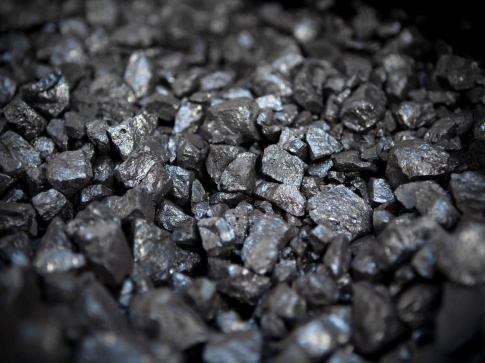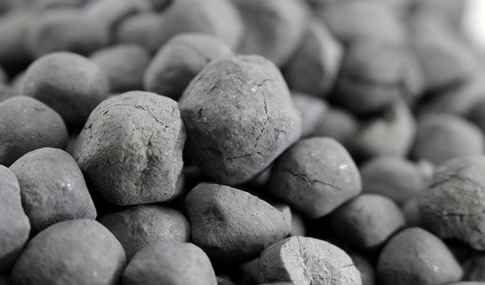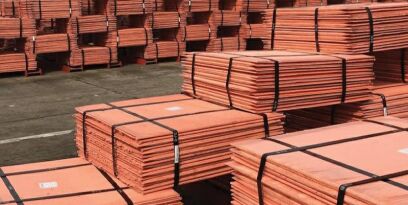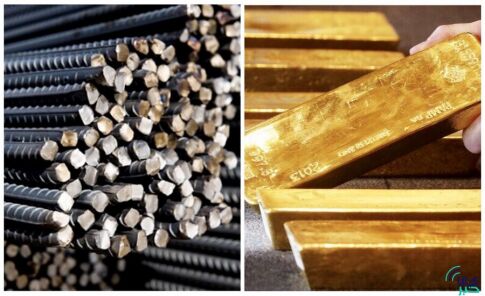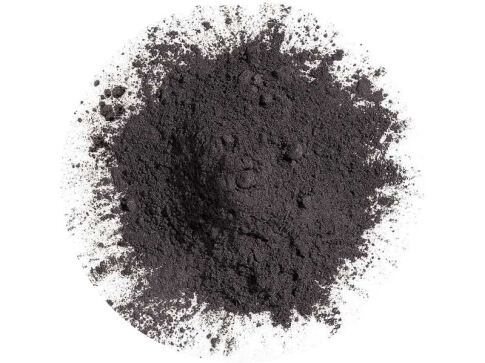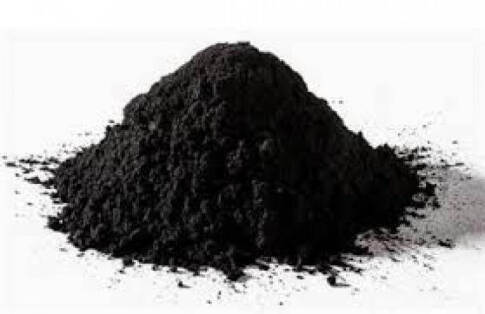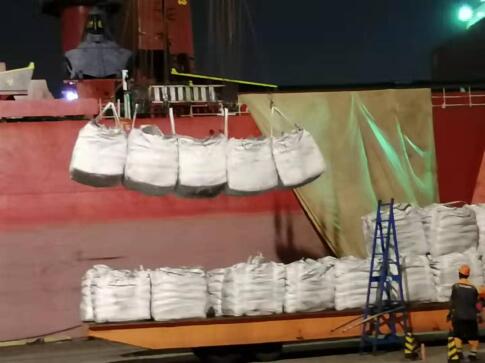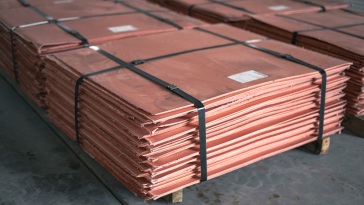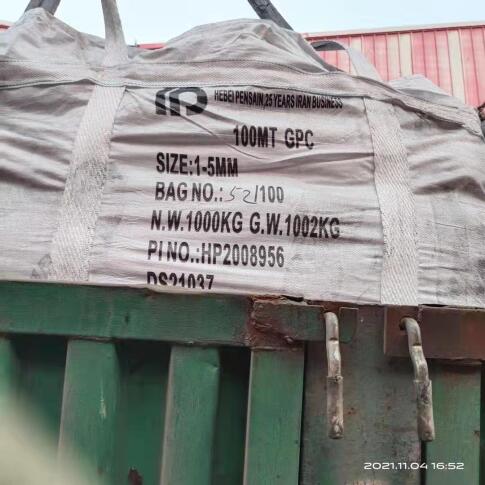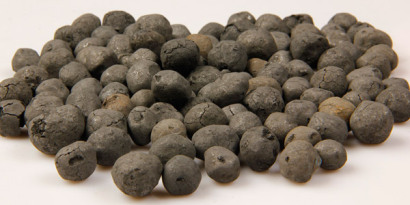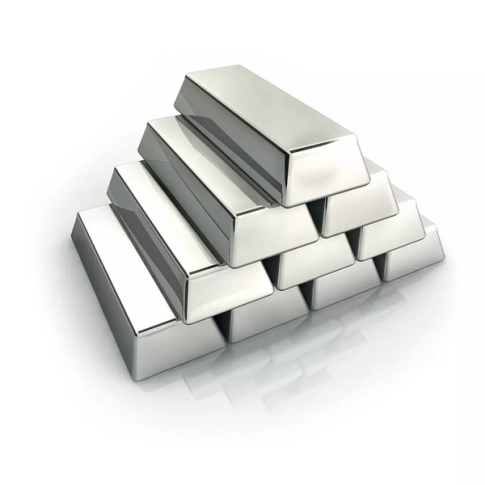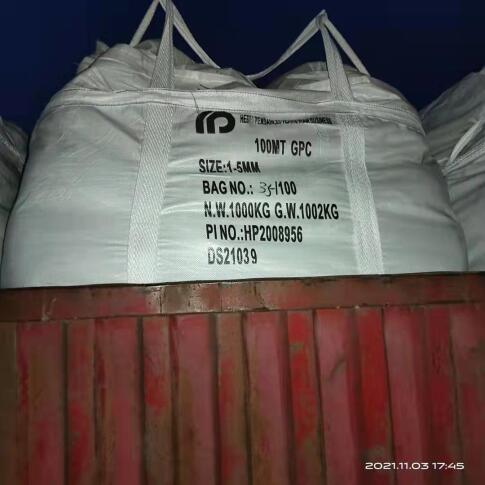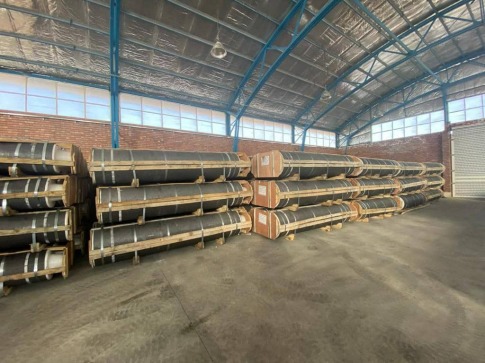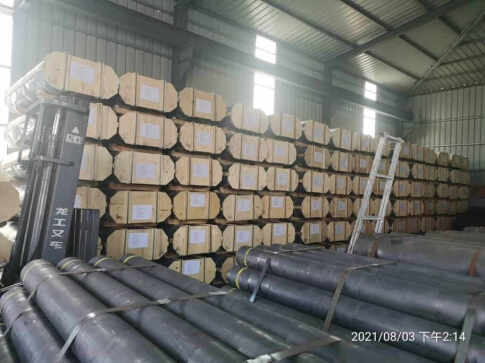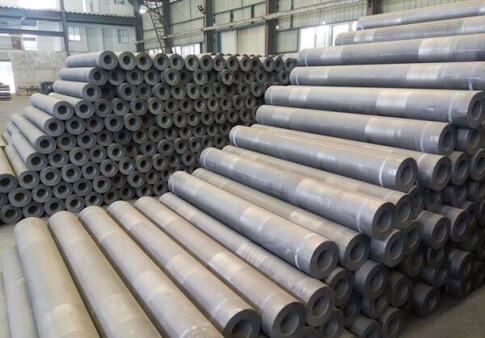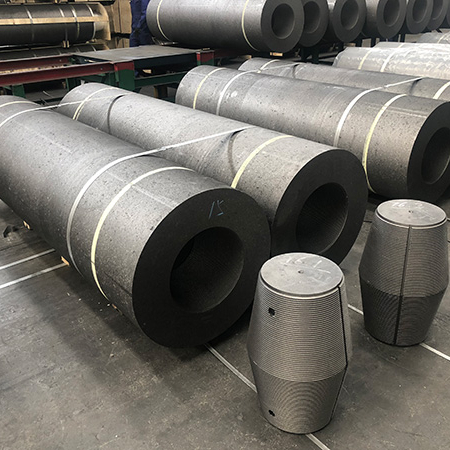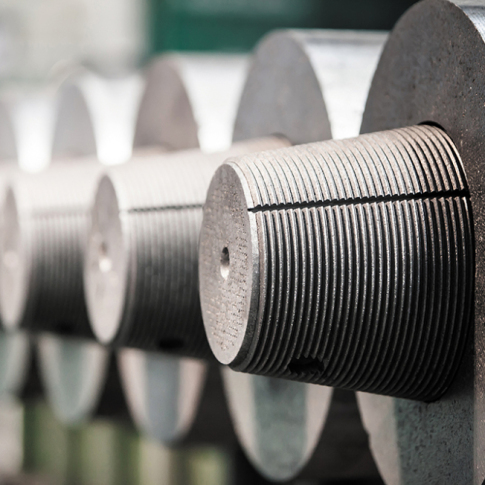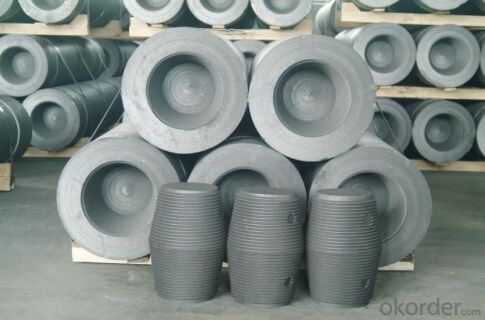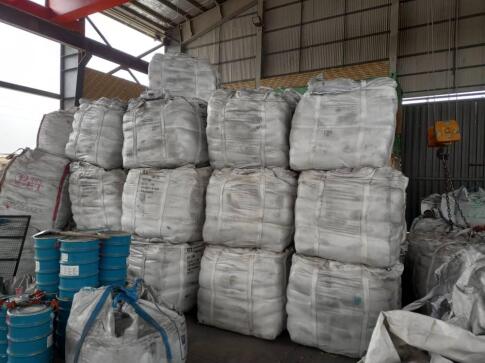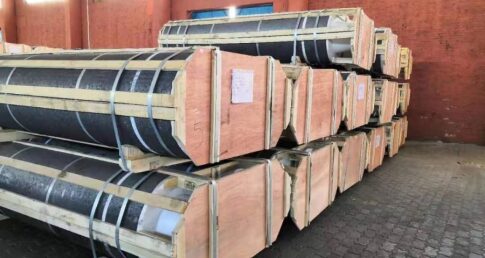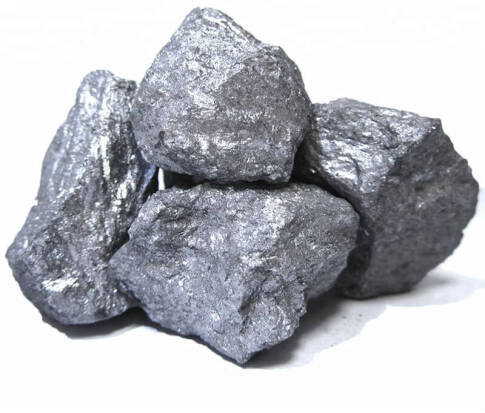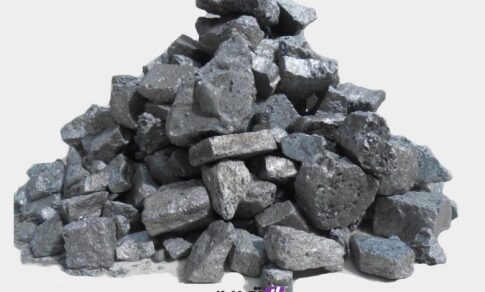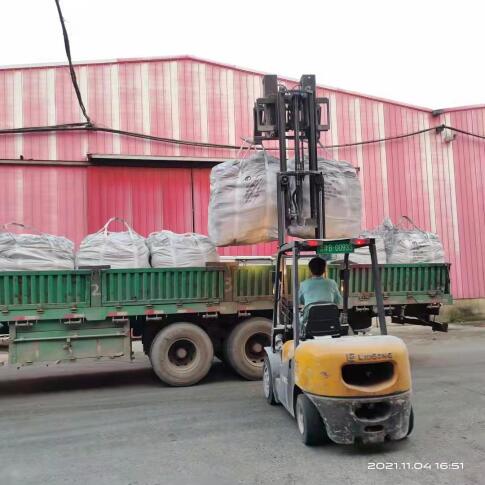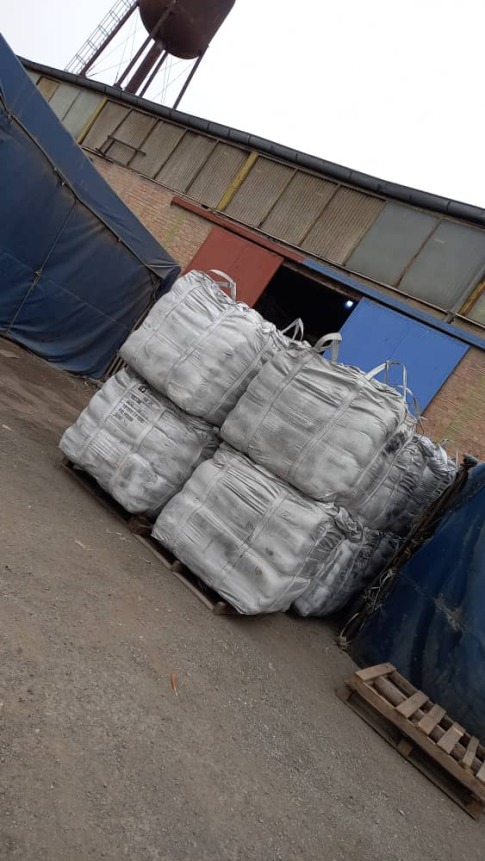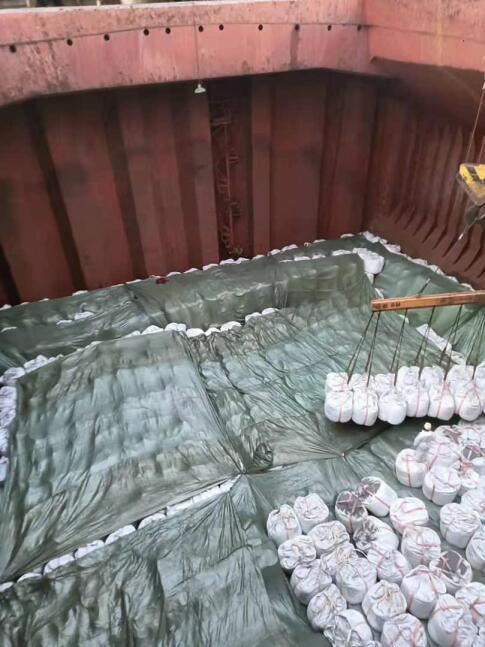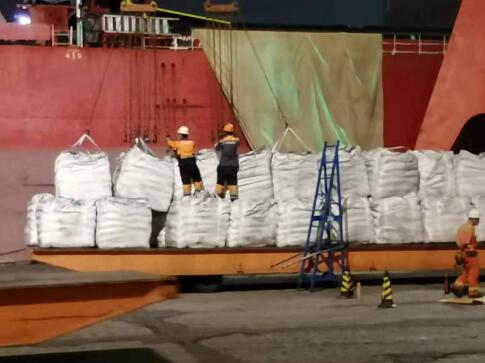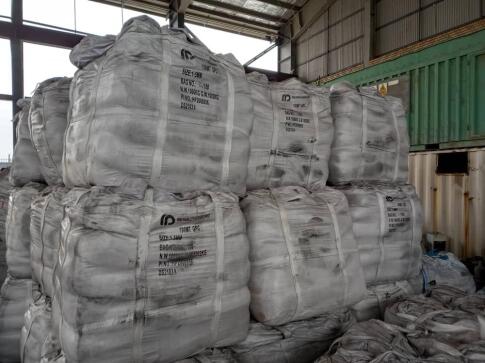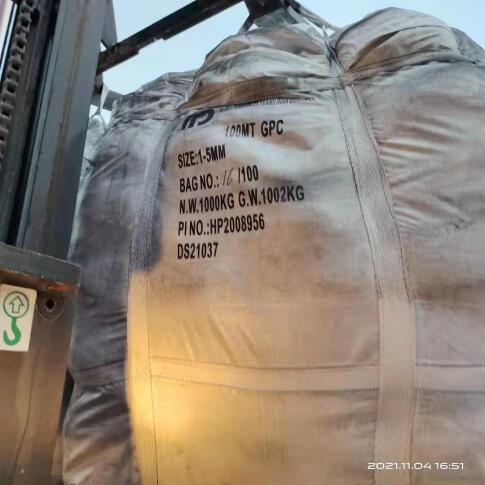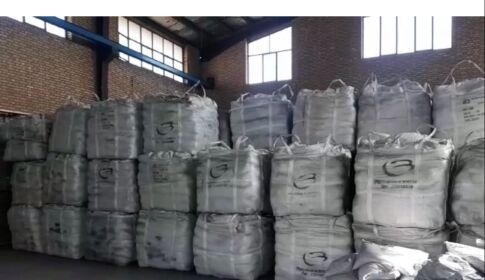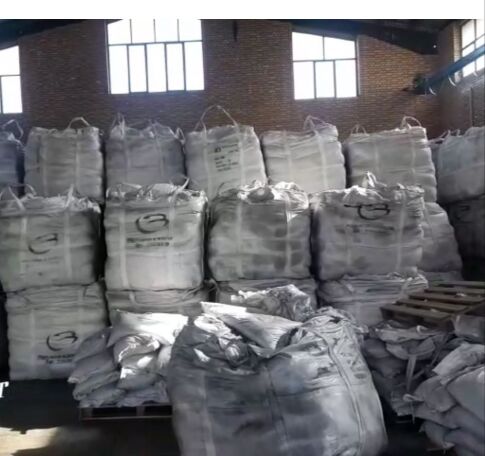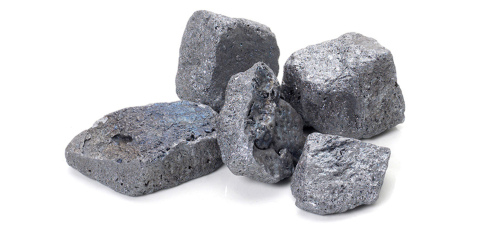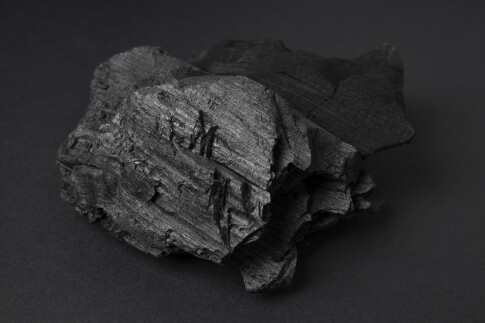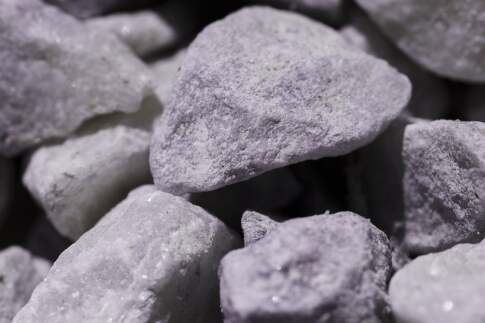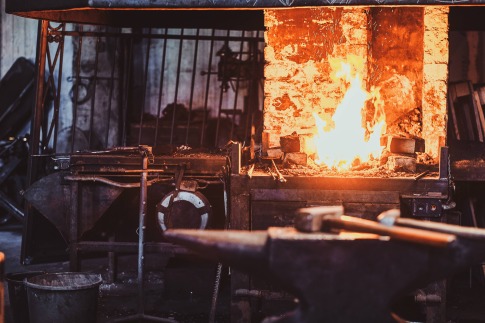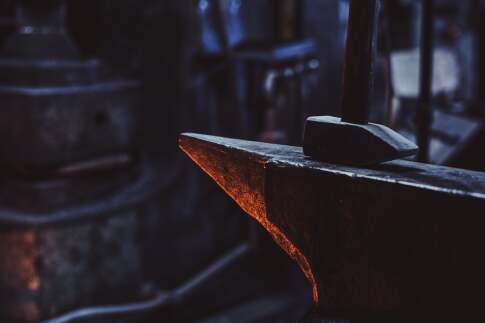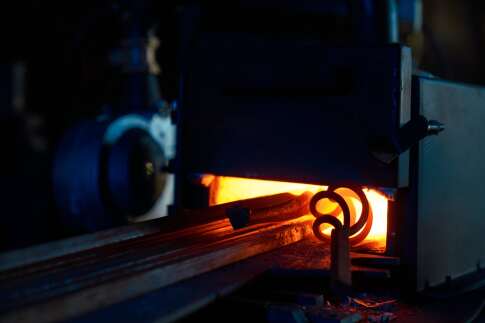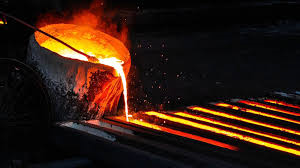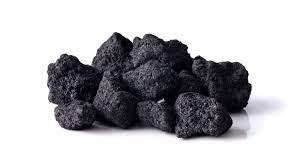An alloy of iron and silicon with an average of 15 to 90% by weight of silicon. It contains a large proportion of iron silicides.
Production and reaction
Ferrosilicon is produced by reducing silica or coke sand in the presence of iron. Common sources of iron are scrap iron or mill mills. Silicon-containing ferrosilicons up to about 15% are made in blast furnaces coated with acid fire bricks. Ferrosilicons with higher silicon content are made in electric arc furnaces. Common formulations available on the market are ferrosilicons with 15%, 45%, 75% and 90% silicon. The rest is iron and is about 2% composed of other elements such as aluminum and calcium. Large amounts of silica are used to prevent the formation of silicon carbide. Microsilica is a useful by-product.
An inorganic perite is similar to ferrosilicon and its compound is Fe5Si2. In contact with water, ferrosilicon may slowly produce hydrogen. This reaction, which is accelerated in the presence of the base, is used to produce hydrogen. The melting point and density of ferrosilicon depend on the amount of silicon, with two regions almost outside the cavity, one near Fe2Si and the second amplitude of the FeSi2-FeSi3 coating.
Ferrosilicon is used as a source of silicon to reduce metals from their oxides and to deoxidize steel and other iron alloys. This prevents the loss of carbon from the molten steel (so-called heat blockage). Ferromanganese, spiglizene, calcium silicates and many other substances are used for this purpose. [4] It can be used to make other alloy ovens. Ferrosilicon is also used to make silicon, corrosion-resistant and high-temperature silicon iron alloys, and silicon steel for electric motors and transformer cores. Ferrosilicon is used in the manufacture of cast iron to inoculate iron to accelerate graphite. In arc welding, ferrosilicon can be found in some electrode coatings.
Ferrosilicon is the basis for the production of precursors such as magnesium ferrosilicon (MgFeSi), which can be used to produce iron. MgFeSi contains 42.3% magnesium and small amounts of rare earth metals. Ferrosilon is also important as an additive to cast iron to control the initial silicon content.
Ferrosilicon magnesium is effective in the formation of nodules, which is more flexible than iron. Unlike gray cast iron, which forms graphite shells, cast iron contains graphite knots or pores that make cracking more difficult.
Ferroslison is also used in the Pidgeon process to make magnesium from dolomite. Treatment of high silicon ferrosilicon with hydrogen chloride is the basis of industrial synthesis of trichlorosilane.
Ferrosilicon with a ratio of 3 to 3.5% is also used in the manufacture of magnetic circuit sheets for electric transformers.
Hydrogen production
Ferrosilicon is used by the military to rapidly produce hydrogen for balloons by the ferrosilicon method. Sodium hydroxide, ferrosilicon and water are used in the chemical reaction. The generator is small enough to fit in a truck and requires only a small amount of electricity, the materials are non-flammable and do not produce hydrogen until mixed. [5] This method has been used since World War I. Previously, the process and purity of hydrogen production was difficult to control by relying on steam passing through hot iron. [6] While in the "silicon" process, a heavy metal pressure tank is filled with sodium hydroxide and ferrosilicon, and after closing, a controlled amount of water is added. Dissolving the hydroxide heats the mixture to about 200 ° F (93 ° C) and initiates the reaction. Sodium silicate, hydrogen and steam are produced.
Silicon is the most abundant element in the Earth's crust after oxygen and is commonly found in nature as quartz (SiO2). Today, silicon has been used in various industries, but one of its alloys that has been widely used is ferrosilicon or ferrosilicon.
Ferrosilicon is an alloy of iron and silicon that is produced in electric furnaces by heating, melting, and reducing iron and silica (quartz) by carbon materials. Ferrosilicon contains different percentages of iron and silicon, and the amount of silicon in ferrosilicon usually determines the type of ferrosilicon. Among the different types of ferrosilicon, ferrosilicon is 75% more common, which nominally contains 75% silicon. Its composition is from 10 to 90% silicon and the rest is mainly iron. Meanwhile, impurities such as manganese, chromium, phosphorus, sulfur, carbon, titanium and aluminum can be present in ferrosialism to the extent permitted. Ferrosilicon is one of the alloys used in the metallurgical industry, which is used in the steel industry as an oxygenator and in the cast iron industry (gray cast iron) as a germinating agent for graphite formation.Ferrosilicon is used as a basic alloy in the production of steel and cast iron. Ferrosilicon is used to remove oxygen from steel and as an alloying element to improve the final quality of Moore steel. Ferrosilicon is the main base used in the production of alloys such as magnesium ferrosilicon (FeSiMg), which is used to modify soft and flexible iron. Ferrosilicon is immersed in electric arc furnaces, produced using raw materials such as pure quartz, coal and iron ore.
Ferrosilicon was produced separately in 1810 by Swedish and German physicists and chemists.
product introduction :
The chemical composition of 75% ferrosilicon according to the four categories defined in the ISO 5445-80 global standard is as follows:
- 1 AI 75 Fe Si
- 1/5 AI 75 Fe Si
- 2 AI 75 Fe Si
- 3 AI 75 Fe Si
In ferrosilicon, the amount of aluminum impurity (AI) is determined by grade FeSi 75. The lower the amount of aluminum in ferrosilicon, the better the quality of the alloy.
Due to the special geological situation and the impact of all orogenic phases, South Khorasan province has caused the diversity of different facies and has created different mineral reserves, including non-metallic, metallic and mineral, and therefore its resurrection belongs to different geological periods. In this regard, it is one of the important mineral poles of the country and valuable mineral indices such as decorative stones, mica, blue salt, rock salt, gypsum, lime, dolomite, silica, talc, pozzolan, titanium, phosphate and gold are identified. And now all kinds of construction and decorative materials provide a major part of the country's exports and needs.
There are many active and semi-active equivalents of silica in Iran, whose products are mainly used in the glass industry and the production of foundry sand. Silica is obtained mostly from sedimentary units. Most of these mines are in Alborz mountains and Semnan, Tehran, Qazvin and Zanjan provinces, Yazd, Kerman, Nehbandan, South Khorasan, Sistan and Baluchestan, 27 mines in Sanandaj-Sirjan zone and West Azerbaijan provinces, Kurdistan, Hamedan, Kermanshah, Markazi. , Lorestan, and East Azerbaijan.
The iron oxide required for the production of ferrosilicon in the project can be supplied to the Nehbandan desert silica mine.
The existence of these mines and iron reserves, as well as the construction of steel mills, necessitate the construction of ferrosilicon production in South Khorasan province.
Import and export conditions of the product:
Export and import conditions of this product are based on the approval of the Cabinet on 7/4/1372. There are no restrictions on the import of this product in accordance with the terms and conditions of import.Review and provide the necessary information on the production price of domestic products as well as the global product price:
The global rate of this product has fluctuated in recent years, these changes have depended on the supply and demand and changes in exchange rates. The table below shows some of the global supply and demand and average fluctuations:
Explanation of consumption and application of the desired product in domestic and foreign markets:
Ferrosilicon is used as a basic alloy in the production of steel and cast iron. Ferrosilicon is used to remove oxygen from steel and as an alloying element to improve the final quality of steel. Ferrosilicon is the main base used in the production of alloys such as magnesium ferrosilicon (FeSiMg), which is used to modify soft and flexible iron.
Ferrosilicon with suitable compounds and granulation is added to steel and cast iron parts during steelmaking to create a suitable structure. By adding a certain amount of ferrosilicon to molten steel and cast iron, the possibility of formation of tactical carbides is reduced and the perlite structure of the parts tends to ferrite. By adding ferrosilicon to the graphite melt, the casting is done faster. Also, increasing ferrosilicon reduces the tensile strength of the parts, increases their relative length and increases the impact resistance. Ferrosilicon is used in casting companies with a grade of 75% more than other alloys, but to choose the right option, the amount of carbon and aluminum in it must be controlled. The main applications of ferrosilicon in the foundry and steel industries are as follows:
1- As an oxygenator in the steel industry
2- As a germinator in cast iron and casting to form graphite
3- Increasing silicon factor in the production of percilis alloy cast irons and percilis alloy steels
4- Application in stainless steel production
5- As a reducing agent in the production of other ferroalloys
6- Master Alloy for production of magnesium ferrosilicon (FeSiMg)
7- Production of unbreakable cast irons
Review of alternative goods, competitors and analysis and its effects on product consumption:
There are no specific alloys or substitutes for ferrosilicon, and only some ferroalloys, such as magnesium ferrosilicon (FeSiMg), play a germinating role in the formation of spherical graphite in unbreakable cast irons.
Major countries producing and consuming the product (if possible, the share of production or consumption should be mentioned)
According to reports in 2004, about 22.5 million tons of various types of ferroalloys were produced in the world. China, South Africa, Ukraine, Kazakhstan and Norway produced a total of 17.2 million tons of ferroalloys (ranked first to fifth) 76%. They have taken over the world from the production of ferroalloys.
China alone accounted for more than 8.65 million tons of ferroalloys in 2004, accounting for about 38 percent of global ferroalloys production, and Iran's share of ferroalloys production in the same year (2004) was less than half a percent of world production. Ferrosilicon production in the industrialized countries of the world depends primarily on the cost of electricity generation in those countries. For example, ferrosilicon production in Norway is higher than in the United States. Germany supplies ferrosilicon from Norway.



